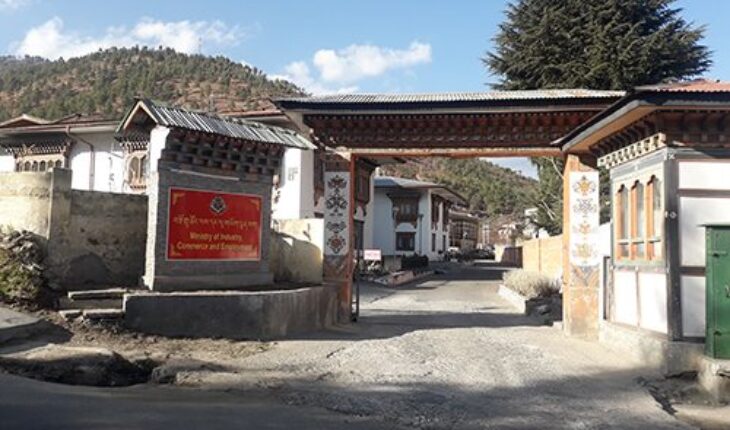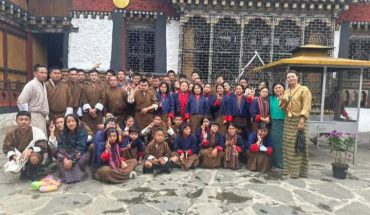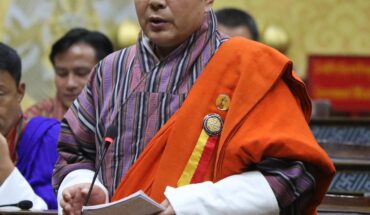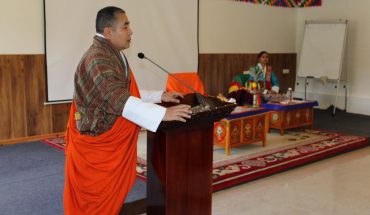
Only about 28 returnees have secured employment so far through the National Reintegration Program
TIL BDR GHALLEY
Thimphu
The Ministry of Industry, Commerce and Employment (MoICE) addressed increasing public concerns regarding the rising trend of youth migration and persistent unemployment in the country at the 16th Government Press Meet,
The Ministry presented updates on its two major programs aimed at tackling these issues with the National Reintegration Program (NRP) and the Overseas Employment Program (OEP).
MoICE Minister Namgyal Dorji said that the NRP launched in 2023, was established with the primary objective of “encouraging Bhutanese who are working abroad to return home and reintegrate into the local workforce.”
He said the program is structured to support the return of Bhutanese nationals by identifying domestic employment opportunities that align with the skills and qualifications acquired abroad. This includes not only technical skills and academic credentials but also international work experience and exposure.
The Department of Employment and Entrepreneurship (DoEE) is currently working in collaboration with various stakeholders including government institutions, private companies, and Technical and Vocational Education and Training (TVET) institutes to map the competencies of returnees with available job openings in the country.
Lyonpo Namgyal Dorji said, “Where possible, the program facilitates referral to employment opportunities for interested individuals.”
As of May 2025, more than 560 Bhutanese working abroad have officially registered under the reintegration program. Of this, about 170 individuals have already returned to Bhutan, while the rest remain overseas but have expressed an interest in returning under the program.
However, despite these efforts, only 28 returnees have secured employment so far through NRP, primarily in the hospitality and service sectors.
The Ministry acknowledged that one of the major challenges is the limited availability of suitable job opportunities that align with the varied profiles of returnees. Lyonpo clarified during the briefing that the program does not allow for direct reemployment into previous roles or organizations.
“The Ministry cannot place returnees directly into their former positions. All recruitments must follow the open and merit-based procedures of respective agencies,” he stated.
Lyonpo added returnees are advised to apply for vacancies through the normal recruitment processes of organizations, both in the public and private sectors.
Alongside reintegration efforts, the Ministry also reaffirmed the continuation of the Overseas Employment Program (OEP), which has been in operation since 2013.
The OEP is aimed at addressing local youth unemployment by enabling Bhutanese youth to gain international work experience, develop professional competencies, and earn income through fixed-term contracts abroad.
MoICE reported that under this program, Bhutanese individuals are usually placed on two- to three-year contracts in countries such as Japan, Australia, and Middle Eastern nations. After completing their contract terms, these individuals are expected to return to Bhutan.
The Ministry emphasized that the program is deliberately maintained on a limited scale to ensure there is no massive outflow of Bhutanese youth.
“The program has been implemented on a small scale to ensure that there is no large outflow of youth from the country,” he stated.
As of last year, data around 37,000 Bhutanese nationals are residing in Australia, while approximately 11,000 Bhutanese are believed to be working across Middle Eastern countries.
The Ministry also raised concerns about the growing number of Bhutanese seeking overseas employment through informal or unregistered channels.
Lyonpo said, “Many individuals are seeking overseas employment through unregistered agents and informal channels, which has, in some cases, led to exploitative and unfavorable working conditions abroad.”
Although the Ministry does not restrict individuals from pursuing overseas opportunities on their own, it underscored the importance of using registered and credible employment agencies. The Ministry stated its commitment to creating safer and more transparent pathways for youth seeking jobs abroad.
“We are committed to connecting aspiring youth with credible international employers and registered recruiters,” he noted. The overarching goal is to ensure that any overseas employment arranged under government programs provides fair pay, safety, and room for personal and professional growth.
Lyonpo also acknowledged the risk of human trafficking and labor exploitation associated with unregulated migration routes. While it did not provide exact figures, the Ministry admitted that several Bhutanese have faced serious difficulties after being recruited through informal agents.
In response, MoICE Minister has emphasized the need to raise public awareness, advising youth and job seekers to thoroughly verify the legitimacy of job offers and recruitment agents before making any commitments.
Lyonpo further highlighted that the NRP is also intended to harness the skills, experiences, and education of Bhutanese who have lived, worked, or studied abroad.
“By providing appropriate employment opportunities,” the Ministry stated, adding the program seeks to turn Bhutan’s diaspora into a valuable asset for the nation’s future growth and development.
Lyonpo also emphasized the dual benefits of overseas employment the enhancement of individual capabilities and the contribution to national development.
He stated that remittances, international exposure, and knowledge transfer from overseas Bhutanese could play a significant role in Bhutan’s economic and human resource development.
While acknowledging ongoing challenges, Lyonpo reiterated its long-term vision of addressing youth unemployment and labor migration through a dual-pathway approach by facilitating safe, structured work opportunities abroad and simultaneously reintegrating returnees into the domestic economy.
He also emphasized on the greater collaboration among government agencies, the private sector, and training institutions to ensure the successful implementation of the programs.





